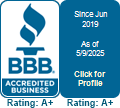Allstate Sprinkler Corporation performs field acceptance testing of newly installed as well as existing sprinkler systems and fire pumps. These tests demonstrate that your sprinkler system and fire pumps are performing according to the manufacturers’ specifications. The fire pump and insurance testing works to ensure that you’re receiving the correct amount of water necessary for the correct functioning of your sprinkler system.
Insurance tests and fire pump performance tests can deteriorate over time or be affected by impairments to water supplies. It’s important for you to have a regular insurance testing in order to identify any problems with your system, ensuring that the sprinkler system and fire pump are able to operate when you need it.
Your Fire Pump is the Heart of Your Fire Protection System
Why is it essential to test and maintain a fire pump regularly?
The importance of your fire pump works to reinforce the public water supply when a public water main is unable to provide the necessary volume or pressure your automatic sprinkler system needs to work. If the water demand surpasses the capability of the water supply, or if no water is available, your fire pump will need to be able to start promptly during any emergency.
Your Fire Pump Needs Constant Care
It is critical for you to establish a regular fire pump inspection, testing, and maintenance check to ensure the proper function of your fire pump.
Check Up Weekly:
- Valves + Piping: Check your fire pump’ suction, discharge and bypass valves to ensure that they’re open and piping is free of leaks. (in most cases, the fire pump valves should be locked)
- Pump Control: Check your system’s fire alarm conditions; that the controller is in automatic start mode.
- Pressure Relief: Verify that your relief valves are operating properly. This means that water should not be flowing through them; relief valves are designed to keep water pressure from exceeding the system’s design pressure in the event a pump driver experiences an over-speed condition, or if the public water supply pressure increases.
- Pump Cooling: Check the water flow. Slight leakage is normal and indicates water lubrication and cooling is adequate. Also check the pump casing and bearing for overheating or any signs of excess vibration.
- Water Supply: During colder weather, make sure heat is provided to the supply lines and the suction source. For open bodies of water, check the suction intake for any possible obstructions. Verify during any drought or dry conditions have no significantly reduced the water supply. For public supply booster pumps, check of valves on the suction line.
- Pump Room Temperatures: Check your pump room temperatures, making sure they are at the correct temperature appropriate for your fire pump system.
- Diesel Engines: Make sure your engine is clean, dry and running smoothly
Check up Monthly:
- Check level and specific gravity of the diesel engine battery electrolytes
- Check for corrosion of diesel engine batter terminals and condition of cable lines and connections
Many building projects throughout New York City must comply with a standpipe Hydrostatic pressure testing, and Allstate Sprinklers can help! If you have any questions or concerns about the Fire Pump testing in your building, or the Insurance Testing in NYC call us at 718-597-4060.
1. “Fire Pump Inspection Checklist”. (n.d.). Retrieved June 16, 2016.


Leave a Reply
Want to join the discussion?Feel free to contribute!